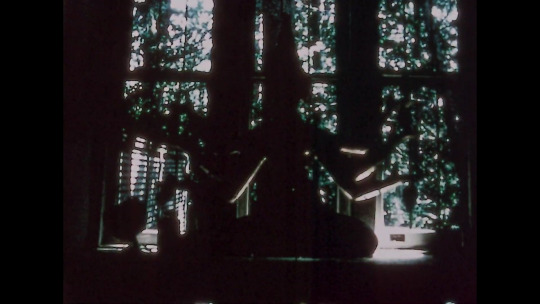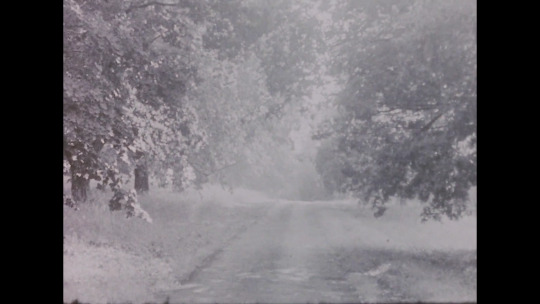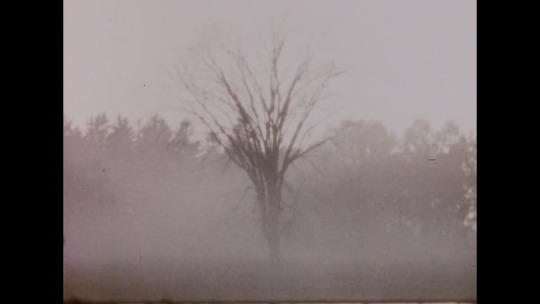#report from millbrook
Text

"ROBBERS ARE SENTENCED." Toronto Globe. December 16, 1913. Page 2.
---
Two Peterboro' Men Punished for Theft from Drunken Man.
----
(Special Despatch to The Globe.)
Peterboro, Dec. 15. - This morning Police Magistrate Dumble sentenced Lavergne Killenbeck and Percy Holland to three years in Kingston penitentiary and two years in Ontario Reformatory respectively. On Saturday they were convicted of the robbery, on Friday, of a drunken man. There is evidence that they have been living for many months on the proceeds of similar robberies.
[Killingbeck was 21, from Millbrook, Ontario, right near Peterborough, and had been in the Central Prison before. He was convict #F-697 at Kingston Penitentiary and worked in an industrial shop. He was reported once in August 1914 for misconduct, losing 15 days remission. In 1915, he was put in solitary in May for disobedience, and between May and October was reported 6 times and lost 30 days total remission. He was released in fall 1916. In October 1917 he enlisted in the Canadian military. He went overseas in February 1918, as part of a Reserve Battalion, was in training at Seaford, got ill with the Spanish flu before going to the trenches in September, and was invalidated home, though he survived the war and the flu.]
#peterborough#police court#robbery#stealing from drunks#robbers#jailbirds#sentenced to the penitentiary#kingston penitentiary#sentenced to prison#guelph reformatory#crime and punishment in canada#history of crime and punishment in canada
0 notes
Text

December 30, 1962, and several other occasions, Leary attempts to buy one hundred grams of LSD and twenty-five kilos of Psilocybin.
Bureaucratic Hurdles
With their projects freed from the constraints of the university, the spectrum of psychedelic experiments at Millbrook assumed new dimensions. However, the necessary supply of psilocybin and LSD could no longer be ordered through the university. Nevertheless, on December 30, 1962, Leary ordered one hundred grams of LSD and twenty-five kilos of psilocybin from the English company L. Light & Co., an English co-contractor of Sandoz, on Harvard University letter head. The company’s director, Henry de Laszlo, thanked Leary but asked for more information about the purpose of the unusually large quantities—that much LSD would suffice for a million trips at one hundred micrograms. At the same time, he informed Albert Hofmann with whom he seems to have been acquainted, and both wondered why the order was not sent to Sandoz in Basel or to its America Branch. Leary, too, seems to have been uncertain and on January 11, 1963, probably unaware that it was Hofmann’s birthday, he sent an order to Basel, this time addressed to the pharmaceutical company Hoffmann-La Roche. They in turn forwarded it to Sandoz. Again, Leary ordered one hundred grams of LSD and twenty-five kilos of psilocybin and inquired about the availability and price of N,N-dimethyltryptamine (DMT),N,N-diethyltryptamine (DET), 6-hydroxyDMT, psilocin (4-hydroxy dimethyltryptamine)and bufotenine (5-hydroxy dimethyltriptamine); once again the order was sent on the letterhead of his former employer, with Leary’s note that he was the director of a research project studying the effects of psychedelic drugs; tissue and animal tests and further studies with voluntary subjects were planned.
For this purpose, Leary, Alpert, Metzner, Walter Houston Clark, Huston Smith and others founded the International Federation For Internal Freedom (IFIF) on January 23,1963 in Millbrook as a nonprofit psychedelic, educational and research organization. Independent study groups were planned plus magazine, Psychedelic Review. However, the quantities of psilocybin and LSD they had ordered failed to arrive. Instead, they received Albert Hofmann’s letter of January 24th in which he expressed his interest and how pleased he was with these projects. He told Leary that Sandoz would gladly provide the product but only directly, not through intermediaries. He mentioned the inquiry to Light & Co. and asked Leary to turn to him personally in the future. That Same day, Sandoz quoted IFIF an offer with details of price, delivery, packaging, and methods of payment. The price was 75 Swiss Francs per gram for psilocybin and 508 Swiss francs per gram for LSD. IFIF was requested to include the import license from the proper authority with their final order. Sandoz added that “the other substances mentioned in your enquiry can in principle also be supplied by us and we would be very thankful to you if you would let us know by next mail the quantities you intend to order for each product to enable us to prepare a special offer for your university. You may be assured that we shall not fail todo all in our power to satisfy you in every respect and thanking you in anticipation of your further news.” Five days later, YvesDunant, the general manager of Sandoz circulated an internal memo: “Mr. Masonwarns against sending Dr. Leary the 25 kilos of psilocybin and 500 grams of LSD he ordered. We will receive a letter from Dr.Henze next week with the necessary explanations.” Two days later, a telegram arrived at Sandoz from L.G. Wiggins, vice president of Harvard University in which he stated that Harvard was not responsible for Alpert’s and Leary’s order of psilocybin and LSD.
On February 7th, the promised letter from Dr. Carlo Henze, manager of the U.S. branch of Sandoz, reached Yves Dunant in Basel. Among other things, he reported: “That there is ample evidence that LSD has been smuggled into this country from various outside sources, including Mexico, Israel, and perhaps Italy and that the federal authorities have looked upon this with increasing suspicion.... The reason for this interest, aside from the bad publicity, is inherent in the fact that certain groups outside the medical field have been playing around with hallucinogenic substances and that the drug has also found its way into the hands of drug addicts and other fringes of psychopathic personality groups.... I am writing to you today to recommend that no shipment of these compounds be made directly from Basel to any person in this country.” He confirmed that Harvard University was not informed of the order; he concluded that while Dr. Timothy Learywas still a member of the university and was making use of Harvard University stationary, that he knew that Leary had been fired because of the irresponsible manner in which he and his associates had used hallucinogenic substances. In a separate letter to Renz and Hofmann, Henze requested that they refrain at all costs from doing any further business. His information stemmed from, among others, FDA employee HaroldO’Keefe who told Henze that there was abuse, the substances had gotten into the wrong channels and, regarding LSD: “Of All drugs that we know about, we know of none which deserve controlled handling toa greater extent than these.”
On February 13th, Leary again turned to Hofmann, repeated his order, and mentioned that journalists were interested in their projects for an article in LIFE. A down payment in the form of a check for over ten thousand dollars was enclosed. Meanwhile, Leary’s inconsistencies with regard to Harvard and the future direction of his projects had turned Hofmann’s initial interest and delight into growing annoyance. His irritation shows in his handwritten note at the reference to media attention in the letter: “That apparently is the most important thing.” Leary continued: “We feel that we are engaged in furthering the important and exciting work that you began. Life gets complicated at times when some of our colleagues fail to grasp its significance. Life must be equally complicated for you.” Again Hofmann Noted by hand: “Certainly after this letter! ”The tone of Hofmann’s response is business-like but notably less friendly than in earlier letters: “Needless to say, our company will proceed in this matter strictly according to FDA regulations.” And, “I note with some concern from your communication that you have given your research project a publicity(e.g. invitation to LIFE reporters) which can only be injurious to the scientific clarification of questions connected with the use of these substances.” For its part, Sandoz sent Leary's Check back to him and turned down the order for lack of an import license.
Leary and his fellow campaigners at IFIF still did not give up, as can be seen from Hofmann’s internal communication of February 28th regarding a phone call from Richard Alpert: “Without prior notice I Received a call from Dr. R. Alpert, a colleague of Dr. Leary, Harvard University, Cambridge, USA. He asked whether the order for one kilogram of psilocybin and one hundred grams of LSD had arrived and what our response was. I filled him in regarding the contents of our written response to Dr. Leary that should arrive shortly. Richard Alpert again explained the basis and goal of IMF's approach. Since Sandoz USA apparently was not willing to take over distribution of LSD and psilocybin or responsibility for their use with respect to the FDA, IFIF had constituted itself as the central contact for a large number of research groups to relieve Sandoz of this task and enable the projects to continue their research with these substances. Based on past negotiations with the FDA, he believed that recognition of IFIF as a sponsor was forthcoming. As soon as they received the required approval from the health authority, IFIF would enter into contract with other pharmaceutical companies for delivery if Sandoz chose not to supply the substances.”
Leary made one more attempt; his letter of March 6th which spoke euphorically of IFIF landed on Hofmann’s desk. A check accompanied the same order as received previously, this time for five thousand dollars, which Sandoz returned on March 19th. Hofmann became unsettled and made inquiries with several friends about Leary and their assessment of his character and the activities of IFIF. Among these contacts was a letter to Aldous Huxley on March 11th in which he summarized events up until then and asked him for information: “Some weeks ago our firm received an inquiry signed by Dr. Leary Of the Harvard University for the delivery of500 gr LSD and 25 kg Psilocybin to be used for the research project of the IFIF. Unfortunately, the LSD, in connection with the Thalidomide-Affair and to some cases of misuse with Psilocybin and LSD, and to which greatest and widest publicity was given for the sole purpose of sensation, was classified as a very dangerous drug. Theseevents caused our branch company in U.S.A.to stop delivery of those substances. It looked as if the IFIF could and would take the respon-sibility for the distribution and application of Psilocybin and LSD towards the FDA. In The above-mentioned inquiry Dr. Learyinformed us that he would procure the nec-essary licenses from the FDA. With the reser-vation that the ‘Clearance’ by the FDA had to be settled, we sent in our quotation. Aftera short time, we received a greater order forLSD and Psilocybin and a check is enclosed for an advanced payment, but the Clearance’ was missing. Furthermore, we got a very unfavorable impression by the fact that in the letter containing the order special attention was called to a visit by LIFE reporters and their great interest in the activities of the IFIF. In doing this the whole project seems to be treated with hasty publicity and undesirable sensation.
These were the reasons why our firm could not accept the order. Delivery is, of course, only possible, if the official licence [sic] from the FDA can be presented.... As you of course know, I am also personally convinced that the psychedelic substances offer, besides their usefulness in psychotherapy, as conscious-ness expanding drugs for educational purposes and for self-knowledge new and not yet fully explored possibilities. Unfortunately, the danger of an uncontrolled or unserious application with undue publicity and sensation is very great and therefore the control of distribution and availability is of greatest importance. In our Western civilization the Tabu [sic]is missing which regulates the use of psychedelic drugs by primitive people. It is difficult to replace Tabu by government regulations and therefore it is of paramount importance to know what kind of persons and organizations are dealing with the application and distribution of psychedelic drugs.”
Huxley answered him on March 21st: “I Have been annoyed and disturbed by the stupid and sensational publicity surrounding LSD and also by the cases of misuse which occasionally occur. Not wishing to add to the publicity, I have refused all invitations, in recent months to write articles about LSD or to speak over the radio. What is needed now is not talk, but solid work on the experimental-psychological and psychotherapeutic levels.
I have known Dr. Leary and his colleague Dr. Alpert for several years and have discussed their projects with them.... In general I am of [the] opinion that Leary and Alpert have done some very valuable pioneering work. They have had enthusiastic collaborators of great ability such as Dr. Huston Cummings Smith, Professor of Comparative Religion at the Massachusetts Institute of Technology, and Dr. Alan Watts, the well known orientalist.``
Huxley’s favorable and supportive endorsement of Leary and Alpert succeeded in quieting Hofmann’s mistrust, but changed nothing in his and Sandoz’ position not to complete an order without approval from the FDA. Since the authorizations never arrived, Leary’s repeated orders remained unfilled.
The refusal from Basel did not stop the psychedelic pioneers in Millbrook from carrying on with their studies and experiments. They were able to procure the necessary substances through other channels. The Researchers gave lectures at universities and scientific conferences and published articles in professional journals. Interested and curious visitors came from around the world for discussions and psychedelic experiences, among them: Writer Robert Anton Wilson, later known as co-author of the Illuminatus!trilogy; London psychiatrist R.D. Laing, cofounder of the anti-psychiatry movement; Paul Krassner, journalist and publisher of the magazine The Realist, Willem A. Nyland,a longtime student of Gurdjieff, and many other friends and acquaintances from their Harvard days.
Mystic Chemist 147-151
#PsychedelicSynchronicity
0 notes
Text
Medical Malpractice Attorney in Raleigh, North Carolina - Roberts & Harris PC

At Roberts and Harris PC, our accomplished clinical misbehavior Medical Malpractice Attorney in Raleigh bring more than forty years of joined legitimate involvement with both state and government levels to safeguard the privileges and interests of our kindred North Carolina occupants when they have been harmed by carelessness.
In the event that you have unfortunately lost a friend or family member to clinical negligence, or have been by and by harmed by something very similar, reach us now to study our fitted lawful systems that will permit you to push ahead with certainty, beginning with a free conference.
We acknowledge calls 24 hours every day, seven days per week since we realize that clinical negligence doesn't just happen during business hours, and we need to be where our clients need us, when they need us.
How Could the Truck Mishap Lawyers at Roberts and Harris Help?
Our gifted Raleigh truck mishap lawyers address injury casualties all through North Carolina to assist with guaranteeing they can seek after the obligated individual or blend of gatherings for their wounds. Doing so will require a total accident scene examination, declaration from onlookers, police reports, and documentation that will permit us to seek after the best result for your special situation. Because of the mind boggling nature of these mishaps, an individual physical issue legal counselor can place the significant subtleties in context, and follow up on quick recuperation necessities in the meantime and think of the best strategy for you to follow.
Might I at any point Record a Case in the event that I Lost a Friend or family member in A Truck Crash?
On the off chance that you lost a friend or family member in a semi-truck mishap in North Carolina, you might be qualified to record an unjust demise guarantee against the to blame party.
Contact our devoted heavy transport Personal Injury Attorney in Raleigh, North Carolina today by calling 919-249-5006 or online to get familiar with how we seek after results. In the event that we don't deliver a positive result for your case, you don't pay our lawful charges.
Visit at our Address: 203 W Millbrook Rd Suite 204, Raleigh, NC 27609, United States
0 notes
Photo




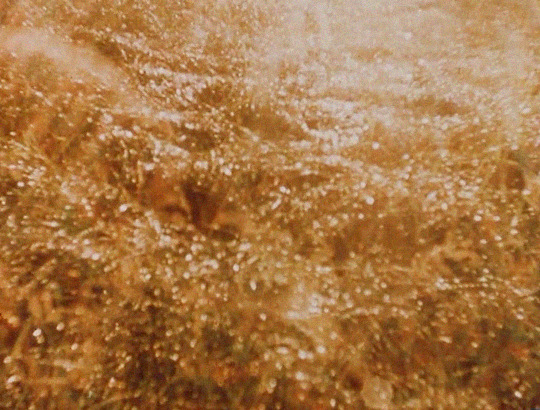


Report from Millbrook (11min.) 1966, dir. Jonas Mekas.
1K notes
·
View notes
Photo
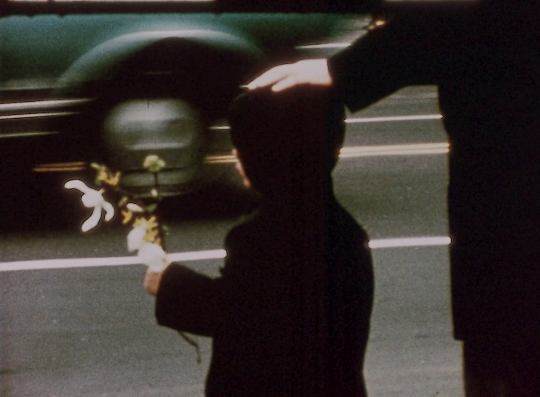
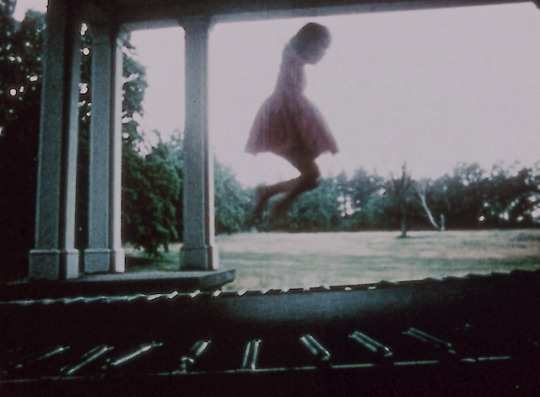


Jonas Mekas
- Report from Millbrook
1966
#jonas mekas#report from millbrook#experimental film#avant garde#diary film#1966#flower#railtrack#jump#indie film#independent film
5K notes
·
View notes
Photo



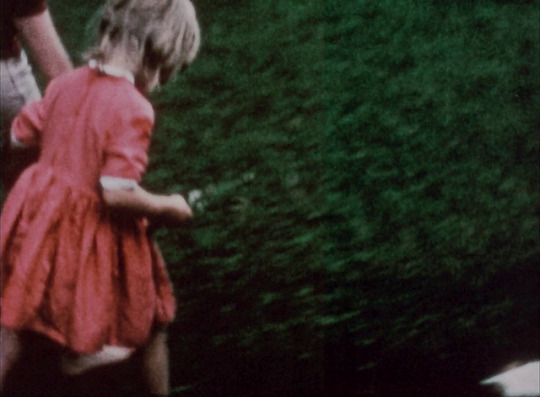






Report from Millbrook (Jonas Mekas, 1966).
123 notes
·
View notes
Photo

Jonas Mekas
- Report from Millbrook
1966
via: shihlun.tumblr.com
2K notes
·
View notes
Photo

The Millbrook Twins
15-year-old twins Jeannette and Dannette Millbrook vanished from the streets of Augusta, Georgia, without a trace. The African American girls have not been seen since March 18, 1990, and despite being one of the few cases of missing twins in American history, their disappearance remains unsolved.
On March 18, 1990, Dannette and Jeannette Millbrook walked to the local Church's Chicken restaurant for lunch. When they returned, they informed their mother, Louise, that a man in a van had followed them for part of their walk. Nothing further is known about this man. Later in the day, the twins walked to their godfather's house for the purpose of borrowing money to take a city bus to school the following week, as the teens and their family had recently moved to a new apartment further from their school. After receiving the $20 for bus fare and a little extra for snacks, the teens went to their cousin's house and asked her to walk home with them. The cousin's mother would not allow her to accompany the twins because it would be dark soon. After visiting their cousin, they made a stop at their older sister's home and stayed for approximately fifteen minutes. They also requested that their older sister walk with them, but she declined due to recently giving birth. After their disappearance, family members considered it unusual that the twins made multiple requests for company on the walk home that day.
Next, they continued on to a local gas station, where they bought chips, candy, and soda. The clerk, Gloria, was familiar with the twins. She did not recall anything out of the ordinary about their behavior. She is the last person to see Dannette and Jeanette. Jeannette was last seen wearing a blue pullover shirt over a white turtleneck with a beige skirt, white stockings, and white sneakers. At the time of her disappearance, she was 5'4, and 125 lbs Dannette was last seen wearing a white shirt with an image of Mickey Mouse, white jeans, and black shoes. At the time of her disappearance, she was 5'6 and 130 lbs. Dannette has been described as "bowlegged". Both girls had pierced ears, shoulder-length hair styled in Jheri curls, and they both have a scar near their navels from a surgery shortly after birth.
Dannette and Jeanette were enrolled as students at Lucy Laney High School. The twins were known to be good teens and were not troublemakers; they did not have a history of running away and there appears to be no motive for their disappearance. The twins did not have a history of misbehaviour, outside of a single instance that occurred as a result of one of the twins being bullied at a bus stop.
After the girls were discovered missing, the family was told to wait 24-hours before making a report. Little is known about the initial investigation, as the original police file is reportedly lost.
Although in 2017 the Sheriff's office met with the Millbrook family to discuss the case and collect familial DNA samples, as of 2019 it is unclear if the case is continuing to be investigated by local law enforcement.
36 notes
·
View notes
Text
#saveourchildren
Long, but good info on to know
**Stolen from Shannon Paige on the P.A.P.U Facebook page***
Epstein Island was the tip of the iceberg
Oprah: Cancelled. Magazine caput.
Ellen: Cancelled.
Jimmy Kimmel: Taking a break.
Piers Morgan: Taking a break.
Tom Hanks: Became a Greek citizen.
Chrissy Tiegen: Made twitter private, deleted 60,000 tweets, blocked 1,000,000+.
Jenna Jameson: Went public about being raped, conditioned, and trafficked in Hollywood as a child.
Justin Beiber: Released music video “Yummy” confirming being a victim of pizzagate as a child.
Isaac Kappy: Repeatedly named Hanks as pedophile. "Committed suicide" on Route 66 just after Hanks tweeted about road kill on Route 66.
Avicii: “Commited suicide” days after releasing video ('For a Better Day') highlighting child sex trafficking.
Chris Cornell: "Committed suicide" while working on child sex trafficking documentary.
Chester Bennington: "Committed suicide" while working on child sex trafficking documentary.
Anthony Bourdain: "Committed suicide" while working on child sex trafficking documentary.
Epstein: Didn't kill himself.
Maxwell: Judge will eventually make private documents public (fears for her life).
Judge appointed to Maxwell/Epstein case: Son is murdered. Husband shot.
Hollywood: SILENT.
Media: <CRICKETS>.
COVID: 99.99% US population survival rate but talked about by all of Hollywood, media, and social media platforms 24/7.
Doctors with different views: Silenced, blocked, mocked, censored, fired.
1,600+ CEOs suddenly "retire".
MEDIA: "Golly, what will be the new name of the Washington Football Team?"
KEEP YOUR EYE ON THE BALL, CLETUS.
Giselle Maxwells list became unsealed and here's what happened while y'all were strategically distracted by the covid bullsh*t...
Shows connection to Epstein over the years...
Democratic Illinois State Representative, Keith Farnham, has resigned and was charged with possession of child pornography and has been accused of bragging at an online site about sexually molesting a 6-year-old girl.
Democratic spokesperson for the Arkansas Democratic Party, Harold Moody, Jr, was charged with distribution and possession of child pornography.
Democratic Radnor Township Board of Commissioners member, Philip Ahr, resigned from his position after being charged with possession of child pornography and abusing children between 2 and 6 years-old.
Democratic activist and BLM organizer, Charles Wade, was arrested and charged with human trafficking and underage prostitution.
Democratic Texas attorney and activist, Mark Benavides, was charged with having sex with a minor, inducing a child under 18 to have sex and compelling prostitution of at least nine legal clients and possession of child pornography. He was found guilty on six counts of sex trafficking.
Democratic Virginia Delegate, Joe Morrissey, was indicted on charges connected to his relationship with a 17-year-old girl and was charged with supervisory indecent liberties with a minor, electronic solicitation of a minor, possession of child pornography and distribution of child pornography.
Democratic Massachusetts Congressman, Gerry Studds, was censured by the House of Representatives after he admitted to an inappropriate relationship with a 17-year-old page.
Democratic Former Mayor of Stillwater, New York, Rick Nelson was plead guilty to five counts of possession of child pornography of children less than 16 years of age.
Democratic Former Mayor of Clayton, New York, Dale Kenyon, was indicted for sexual acts against a teenager.
Democratic Former Mayor of Hubbard, Ohio, Richard Keenan, was given a life sentence in jail for raping a 4-year-old girl.
Democratic Former Mayor of Winston, Oregeon, Kenneth Barrett, was arrested for setting up a meeting to have sex with a 14-year-old girl who turned out to be a police officer.
Democratic Former Mayor of Randolph, Nebraska, Dwayne L. Schutt, was arrested and charged with four counts of felony third-degree sexual assault of a child and one count of intentional child abuse.
Democratic Former Mayor of Dawson, Georgia, Christopher Wright, was indicted on the charges of aggravated child molestation, aggravated sodomy, rape, child molestation and statutory rape of an 11-year-old boy and a 12-year-old girl.
Democratic Former Mayor of Stockton, California, Anthony Silva, was charged with providing alcohol to young adults during a game of strip poker that included a 16-year-old boy at a camp for underprivileged children run by the mayor.
Democratic Former Mayor of Millbrook, New York, Donald Briggs, was arrested and charged with inappropriate sexual contact with a person younger than 17.
Democratic party leader for Victoria County, Texas, Stephen Jabbour, plead guilty to possession and receiving over half a million child pornographic images.
Democratic activist and fundraiser, Terrence Bean, was arrested on charges of sodomy and sex abuse in a case involving a 15-year-old boy and when the alleged victim declined to testify, and the judge dismissed the case.
Democratic Party Chairman for Davidson County, Tennessee, Rodney Mullin, resigned amid child pornography allegations.
Democratic activist, Andrew Douglas Reed, pleaded guilty to a multiple counts of 2nd-degree sexual exploitation of a minor for producing child pornography.
Democratic official from Terre Haute, Indiana, David Roberts was sentenced to federal prison for producing and possessing child pornography including placing hidden cameras in the bedrooms and bathrooms at a home he shared with two minor female victims.
Democratic California Congressman, Tony Cárdenas, is being sued in LA County for allegedly sexually abused a 16-year-old girl.
Democratic aide to Senator Barbara Boxer, Jeff Rosato, plead guilty to charges of trading in child pornography.
Democratic Alaskan State Representative, Dean Westlake, resigned from his seat after the media published a report alleging he fathered a child with a 16-year-old girl when he was 28.
Democratic New Jersey State Assemblyman, Neil Cohen, was convicted of possession and distribution of child pornography.
Republican Tim Nolan, chairman of Donald Trump’s presidential campaign in Kentucky, pled guilty to child sex trafficking and on February 11, 2018 he was sentenced to serve 20 years in prison.
Republican state Senator Ralph Shortey was indicted on four counts of human trafficking and child pornography. In November 2017, he pleaded guilty to one count of child sex trafficking in exchange for the dropping of the other charges.
Republican anti-abortion activist Howard Scott Heldreth is a convicted child rapist in Florida.
Republican County Commissioner David Swartz pleaded guilty to molesting two girls under the age of 11 and was sentenced to 8 years in prison.
Republican judge Mark Pazuhanich pleaded no contest to fondling a 10-year old girl and was sentenced to 10 years probation.
Republican anti-abortion activist Nicholas Morency pleaded guilty to possessing child pornography on his computer and offering a bounty to anybody who murders an abortion doctor.
Republican legislator Edison Misla Aldarondo was sentenced to 10 years in prison for raping his daughter between the ages of 9 and 17.
Republican Mayor Philip Giordano is serving a 37-year sentence in federal prison for sexually abusing 8- and 10-year old girls.
Republican campaign consultant Tom Shortridge was sentenced to three years probation for taking nude photographs of a 15-year old girl.
Republican Senator Strom Thurmond, a notable racist, had sex with a 15-year old black girl which produced a child.
Republican pastor Mike Hintz, whom George W. Bush commended during the 2004 presidential campaign, surrendered to police after admitting to a sexual affair with a female juvenile.
Republican legislator Peter Dibble pleaded no contest to having an inappropriate relationship with a 13-year-old girl.
Republican Congressman Donald “Buz” Lukens was found guilty of having sex with a female minor and sentenced to one month in jail.
Republican fundraiser Richard A. Delgaudio was found guilty of child porn charges and paying two teenage girls to pose for sexual photos.
Republican activist Mark A. Grethen convicted on six counts of sex crimes involving children.
Republican activist Randal David Ankeney pleaded guilty to attempted sexual assault on a child.
Republican Congressman Dan Crane had sex with a female minor working as a congressional page.
Republican activist and Christian Coalition leader Beverly Russell admitted to an incestuous relationship with his step daughter.
Republican congressman and anti-gay activist Robert Bauman was charged with having sex with a 16-year-old boy he picked up at a gay bar.
Republican Committee Chairman Jeffrey Patti was arrested for distributing a video clip of a 5-year-old girl being raped.
Republican activist Marty Glickman (a.k.a. “Republican Marty”), was taken into custody by Florida police on four counts of unlawful sexual activity with an underage girl and one count of delivering the drug LSD.
Republican legislative aide Howard L. Brooks was charged with molesting a 12-year old boy and possession of child pornography.
Republican Senate candidate John Hathaway was accused of having sex with his 12-year old baby sitter and withdrew his candidacy after the allegations were reported in the media.
Republican preacher Stephen White, who demanded a return to traditional values, was sentenced to jail after offering $20 to a 14-year-old boy for permission to perform oral sex on him.
Republican talk show host Jon Matthews pleaded guilty to exposing his genitals to an 11 year old girl.Republican anti-gay activist Earl “Butch” Kimmerling was sentenced to 40 years in prison for molesting an 8-year old girl after he attempted to stop a gay couple from adopting her.
Republican Party leader Paul Ingram pleaded guilty to six counts of raping his daughters and served 14 years in federal prison.
Republican election board official Kevin Coan was sentenced to two years probation for soliciting sex over the internet from a 14-year old girl.
Republican politician Andrew Buhr was charged with two counts of first degree sodomy with a 13-year old boy.
Republican politician Keith Westmoreland was arrested on seven felony counts of lewd and lascivious exhibition to girls under the age of 16 (i.e. exposing himself to children).
Republican anti-abortion activist John Allen Burt was charged with sexual misconduct involving a 15-year old girl.
Republican County Councilman Keola Childs pleaded guilty to molesting a male child.
Republican activist John Butler was charged with criminal sexual assault on a teenage girl.Republican candidate Richard Gardner admitted to molesting his two daughters.
Republican Councilman and former Marine Jack W. Gardner was convicted of molesting a 13-year old girl.
Republican County Commissioner Merrill Robert Barter pleaded guilty to unlawful sexual contact and assault on a teenage boy.
Republican City Councilman Fred C. Smeltzer, Jr. pleaded no contest to raping a 15 year-old girl and served 6-months in prison.
Republican activist Parker J. Bena pleaded guilty to possession of child pornography on his home computer and was sentenced to 30 months in federal prison and fined $18,000.
Republican parole board officer and former Colorado state representative, Larry Jack Schwarz, was fired after child pornography was found in his possession.
Republican strategist and Citadel Military College graduate Robin Vanderwall was convicted in Virginia on five counts of soliciting sex from boys and girls over the internet.
Republican city councilman Mark Harris, who is described as a “good military man” and “church goer,” was convicted of repeatedly having sex with an 11-year-old girl and sentenced to 12 years in prison.
Republican businessman Jon Grunseth withdrew his candidacy for Minnesota governor after allegations surfaced that he went swimming in the nude with four underage girls, including his daughter.
Republican director of the “Young Republican Federation” Nicholas Elizondo molested his 6-year old daughter and was sentenced to six years in prison.
Republican benefactor of conservative Christian groups, Richard A. Dasen Sr., was charged with rape for allegedly paying a 15-year old girl for sex. Dasen, 62, who is married with grown children and several grandchildren, has allegedly told police that over the past decade he paid more than $1 million to have sex with a large number of young women.
Democratic donor and billionaire, Jeffrey Epstein, ran an underage child sex brothel and was convicted of soliciting underage girls for prostitution.
Democratic New York Congressman, Anthony Weiner, plead guilty to transferring obscene material to a minor as part of a plea agreement for sexted and sending Twitter DMs to underage girls as young as 15.
Democratic donor, activist, and Hollywood producer Harvey Weinstein is being criminally prosecuted and civilly sued for years of sexual abuse (that was well known “secret” in Hollywood) including underage sexual activities with aspiring female actresses.
Democratic activist and #metoo proponent, Asia Argento, settled a lawsuit for sexual harassment stemming from sexual activities with an underage actor.
Democratic Mayor of Racine, Wisconsin, Gary Becker, was convicted of attempted child seduction, child pornography, and other child sex crimes.
Democratic Seattle Mayor Ed Murray resigned after multiple accusations of child sexual abuse were levied against him including by family members.
Democratic activist and aid to NYC Mayor De Blasio, Jacob Schwartz was arrested on possession of 3,000+ child pornographic images.
Democratic activist and actor, Russell Simmons, was sued based on an allegation of sexual assault where he coerced an underage model for sex.
Democratic Governor of Oregon, Neil Goldschmidt, after being caught by a newspaper, publicly admitted to having a past sexual relationship with a 13-year-old girl after the statute of limitations on the rape charges had expired.
Democratic Illinois Congressman, Mel Reynolds resigned from Congress after he was convicted of statutory rape of a 16-year-old campaign volunteer.
Democratic New York Congressman, Fred Richmond, was arrested in Washington D.C. for soliciting sex from a 16-year-old boy.
Democratic activist, donor, and director, Roman Polanski, fled the country after pleading guilty to statutory rape of a 13-year-old girl. Democrats and Hollywood actors still defend him to this day, including, Whoopi Goldberg, Martin Scorcese, Woody Allen, David Lynch, Wim Wenders, Pedro Almodovar, Tilda Swinton and Monica Bellucci.
Democratic State Senator from Alaska, George Jacko, was found guilty of sexual harassment of an underage legislative page.
Democratic State Representative candidate for Colorado, Andrew Myers, was convicted for possession of child pornography and enticing children.
Democratic Illinois Congressman, Gus Savage was investigated by the Democrat-controlled House Committee on Ethics for attempting to rape an underage female Peace Corps volunteer in Zaire. The Committee concluded that while the events did occur his apology was sufficient and took no further action.
Democratic activist, donor, and spokesperson for Subway, Jared Fogle, was convicted of distribution and receipt of child pornography and traveling to engage in illicit sexual conduct with a minor.
Democratic State Department official, Carl Carey, under Hillary Clinton’s state department, was arrested on ten counts of child porn possession.
Democratic Maine Assistant Attorney General, James Cameron, was sentenced to just over 15 years in federal prison for seven counts of child porn possession, receipt and transmission.
Democratic State Department official, Daniel Rosen, under Hillary Clinton’s state department, was arrested and charged with allegedly soliciting sex from a minor over the internet.
Democratic State Department official, James Cafferty, pleaded guilty to one count of transportation of child pornography.
Democratic radio host, Bernie Ward, plead guilty to one count of sending child pornography over the Internet.Democratic deputy attorney general from California, Raymond Liddy, was arrested for possession of child pornography.
#moretocome #copyandpaste
#SaveTheChildren #SaveOurChildren
252 notes
·
View notes
Photo

Mackenzie Lueck was tragically murdered at the age of 23 during the early morning hours of June 17th, 2019.
Mackenzie was a student at the University of Utah, and she lived in Salt Lake City. She spent the final days of her life in her hometown of El Selgundo, California, as she was visiting family for a funeral. Mackenzie boarded a flight back to Utah on the evening of June 16th, which landed in Salt Lake during the early morning hours of the 17th. She texted her parents around 2am to let them know she had landed safely. After that final text, Mackenzie's family never heard from her again.
Over the next few days, Mackenzie's family and friends began to notice that something was off. When her father tried to message her on the 18th, he noticed that the messages were going through as text messages rather than iMessages-even though they both had iPhones. Her friends began to worry when Mackenzie did not show up to her shift at Millbrook medical lab, nor did she show up for an exam she was scheduled to take. Knowing this was uncharacteristic of her, Mackenzie's worried parents contacted Utah officials to report her missing on June 20th, 2019.
Throughout the investigation, detectives learned that Mackenzie left the airport on the morning of her disappearance in a Lyft car. Surveillance cameras at the airport captured her exiting the building at 2:40am. Detectives questioned the Lyft driver, who told them that he dropped Mackenzie off at Hatch Park and observed her getting into another vehicle. Both Lyft records and cell phone pings confirmed that Mackenzie exited the Lyft at the park at 2:59am. Mackenzie's family and friends did not know why she asked the Lyft driver to take her to the park instead of taking her home, nor did they know about any plans for her to meet someone there. Detectives then worked to identify who she met up with at the park.
Mackenzie's cell phone records revealed that she was messaging with another person while in her Lyft. In fact, Mackenzie's final text message was sent to this person at 2:58am--just one minute before she exited the Lyft at Hatch Park. Her phone was shut off shortly after 3:00am. Detectives later identified the person Mackenzie was messaging as 31 year-old man named Ayoola Ajayi.
After learning that Ajayi was the last person to communicate with Mackenzie, detectives went to his house in Fairpark to question him. He initially denied knowing Mackenzie, but later admitted they had briefly messaged after meeting on a dating app. Both Ajayi and Mackenzie had a dating app called 'Seeking Arrangements' downloaded on their phone--which is an app designed for people seeking a 'sugar daddy/sugar baby' type relationship.
On June 26th, 2019, authorities executed a search warrant at Ajayi's house. Several items were seized during the search. His backyard was thoroughly searched as well. Two days later, on June 28th, 2019, Ayoola Ajayi was arrested and charged with aggravated murder, aggravated kidnapping, desecration of a body and obstructing justice in relation to the Mackenzie Lueck case. It was then confirmed that detectives had found tissue/DNA belonging to Mackenzie at Ajayi's house. Additionally, it was revealed that on the morning of June 17th Ajayi's cell phone pinged off the same tower Mackenzie's phone pinged off of for the final time--and his ping occurred just a minute after hers.
Once Ajayi was behind bars, investigators continued to comb through evidence and build their case. The evidence they gathered eventually revealed a harrowing story about what happened to Mackenzie.
[read more]
#mackenzie lueck#resolved case#murder case#ayoola ayayi#utah#2019#true crime research#true crime original#tcoriginal#true crime
66 notes
·
View notes
Text
Two men charged after a stabbing incident in Millbrook N.S.
RCMP in Millbrook have charged two men after a stabbing incident.
In a news release Tuesday, RCMP say officers responded to a report of a stabbing on Willow Street in Millbrook, N.S.
“RCMP officers learned that a 29-year-old man had been at a gas station on Willow Street when he interacted with two men in a gold coloured van,” Corporal Chris Marshall said in the release.
“The passenger, a 28-year-old man, exited the van and stabbed the 29-year-old man. The suspect got back into the van and fled the scene.”
The victim, who was injured in the stabbing and is expected to survive, says the suspect was known to him.
At around 6:55 p.m., police say they learned that the two men in the van were now driving a red Honda Civic, and were following the victim who was on his way home.
While on patrol, police say they received a 911 call that someone in the Civic had now pointed a firearm at the victim.
At around 7:15 p.m., police say they located the Civic on Willow Street, and members of the Millbrook RCMP, Colchester County District RCMP and Truro Police Service were involved in a “high-risk takedown” of the suspect.
Three people were found in the vehicle, and all were safely arrested. RCMP officers located and seized a loaded rifle, a knife, and ammunition in the vehicle.
28-year-old Quinn Googoo and 34-year-old Aric Martin, both from Millbrook, have been jointly charged with:
aggravated assault
pointing a firearm
possession of a weapon for a dangerous purpose
Police say both were held in custody and will appear in Truro provincial court Tuesday.
The third passenger, a 29-year-old woman, was released on conditions.
She is facing a charge of unauthorized possession of a firearm in a motor vehicle, and will appear in court at a later date.
For more Nova Scotia news visit our dedicated provincial page.
from CTV News - Atlantic https://ift.tt/lryC4k7
1 note
·
View note
Link
Excerpt from this story from Grist:
The anecdotal evidence for a busy tick year is corroborated by data, Richard Ostfeld, a disease ecologist at the Cary Institute of Ecosystem Studies in Millbrook, New York, said. It’s still too early in the season to say exactly how this year stacks up compared to previous years, but early returns indicate that there has been an explosion of ticks this spring. “All these people complaining of a horrendous year,” Ostfeld said, “they’re actually right.”
The tick boom isn’t exclusive to the Northeast. Tom Mather, an entomologist at the University of Rhode Island and director of a tick awareness program called TickEncounter, said he’s seen an uptick in reports of American dog tick sightings and bites around the country this year. TickEncounter, which crowdsources tick data from people all over the U.S., shows American dog tick submissions were up 30 percent in April compared to March, about 10 or 15 percent higher than usual. “They’re having a good year so far,” Mather told Grist.
There are a number of reasons for this year’s tick boom, including climate change. Climate change is making the “shoulder seasons,” spring and fall, warmer, which means longer feeding seasons for ticks. And rising temperatures are making it possible for ticks to shift their ranges all over the U.S. The lone star tick, an aggressive tick whose bite can cause humans to develop a severe allergic reaction to red meat, has been steadily making its way north from the southern U.S. for several years. Warming winter temperatures could be giving ticks a boost too, Tsao said. “It definitely seems that a mild winter helps their survivorship,” she said. Urbanization and the fragmentation of forests also play a role, as do rodents and deer, which do a great job of picking up ticks in one place and dropping them off in another.
The main reason blacklegged ticks are booming in the Northeast this year has to do with acorns, Ostfeld said. In 2019, oak trees unloaded a big crop of acorns onto forest floors across vast swaths of the Eastern Seaboard. The plethora of hardy tree nuts was a boon for rodents of all kinds — especially mice, which are major carriers of Lyme disease. Rodents survived well that winter and got a jump-start on spring breeding in 2020. When baby blacklegged ticks hatched that summer, they had no shortage of mice to feed on. A year later, those baby larval ticks are molting into nymph ticks — the ticks posing a risk to so many of us this summer.
3 notes
·
View notes
Text

As habitat and biodiversity loss increase globally, the coronavirus outbreak may be just the beginning of mass pandemics
Mayibout 2 is not a healthy place. The 150 or so people who live in the village, which sits on the south bank of the Ivindo River, deep in the great Minkebe Forest in northern Gabon, are used to occasional bouts of diseases such as malaria, dengue, yellow fever and sleeping sickness. Mostly they shrug them off.
But in January 1996, Ebola, a deadly virus then barely known to humans, unexpectedly spilled out of the forest in a wave of small epidemics. The disease killed 21 of 37 villagers who were reported to have been infected, including a number who had carried, skinned, chopped or eaten a chimpanzee from the nearby forest.
I travelled to Mayibout 2 in 2004 to investigate why deadly diseases new to humans were emerging from biodiversity “hotspots” such as tropical rainforests and bushmeat markets in African and Asian cities.
It took a day by canoe and then many hours along degraded forest logging roads, passing Baka villages and a small goldmine, to reach the village. There, I found traumatised people still fearful that the deadly virus, which kills up to 90% of the people it infects, would return.
Villagers told me how children had gone into the forest with dogs that had killed the chimp. They said that everyone who cooked or ate it got a terrible fever within a few hours. Some died immediately, while others were taken down the river to hospital. A few, like Nesto Bematsick, recovered. “We used to love the forest, now we fear it,” he told me. Many of Bematsick’s family members died.
Only a decade or two ago it was widely thought that tropical forests and intact natural environments teeming with exotic wildlife threatened humans by harbouring the viruses and pathogens that lead to new diseases in humans such as Ebola, HIV and dengue.
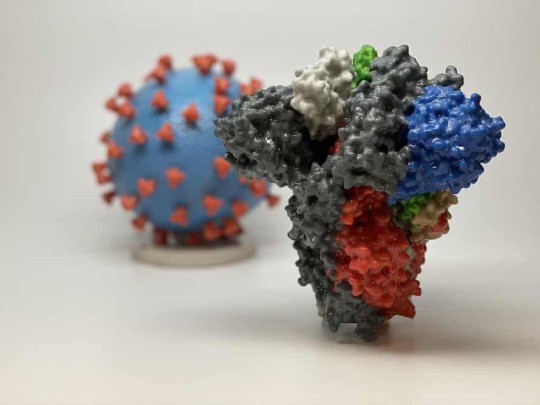
But a number of researchers today think that it is actually humanity’s destruction of biodiversity that creates the conditions for new viruses and diseases such as Covid-19, the viral disease that emerged in China in December 2019, to arise – with profound health and economic impacts in rich and poor countries alike. In fact, a new discipline, planetary health, is emerging that focuses on the increasingly visible connections between the wellbeing of humans, other living things and entire ecosystems.
Is it possible, then, that it was human activity, such as road building, mining, hunting and logging, that triggered the Ebola epidemics in Mayibout 2 and elsewhere in the 1990s and that is unleashing new terrors today?
“We invade tropical forests and other wild landscapes, which harbour so many species of animals and plants – and within those creatures, so many unknown viruses,” David Quammen, author of Spillover: Animal Infections and the Next Pandemic, recently wrote in the New York Times. “We cut the trees; we kill the animals or cage them and send them to markets. We disrupt ecosystems, and we shake viruses loose from their natural hosts. When that happens, they need a new host. Often, we are it.”
Increasing threat
Research suggests that outbreaks of animal-borne and other infectious diseases such as Ebola, Sars, bird flu and now Covid-19, caused by a novel coronavirus, are on the rise. Pathogens are crossing from animals to humans, and many are able to spread quickly to new places. The US Centers for Disease Control and Prevention (CDC) estimates that three-quarters of new or emerging diseases that infect humans originate in animals.

Some, like rabies and plague, crossed from animals centuries ago. Others, such as Marburg, which is thought to be transmitted by bats, are still rare. A few, like Covid-19, which emerged last year in Wuhan, China, and Mers, which is linked to camels in the Middle East, are new to humans and spreading globally.
Other diseases that have crossed into humans include Lassa fever, which was first identified in 1969 in Nigeria; Nipah from Malaysia; and Sars from China, which killed more than 700 people and travelled to 30 countries in 2002–03. Some, like Zika and West Nile virus, which emerged in Africa, have mutated and become established on other continents.
Kate Jones, chair of ecology and biodiversity at UCL, calls emerging animal-borne infectious diseases an “increasing and very significant threat to global health, security and economies”.
Amplification effect
In 2008, Jones and a team of researchers identified 335 diseases that emerged between 1960 and 2004, at least 60% of which came from animals.
Increasingly, says Jones, these zoonotic diseases are linked to environmental change and human behaviour. The disruption of pristine forests driven by logging, mining, road building through remote places, rapid urbanisation and population growth is bringing people into closer contact with animal species they may never have been near before, she says.
The resulting transmission of disease from wildlife to humans, she says, is now “a hidden cost of human economic development. There are just so many more of us, in every environment. We are going into largely undisturbed places and being exposed more and more. We are creating habitats where viruses are transmitted more easily, and then we are surprised that we have new ones.”

Jones studies how changes in land use contribute to the risk. “We are researching how species in degraded habitats are likely to carry more viruses which can infect humans,” she says. “Simpler systems get an amplification effect. Destroy landscapes, and the species you are left with are the ones humans get the diseases from.”
“There are countless pathogens out there continuing to evolve which at some point could pose a threat to humans,” says Eric Fevre, chair of veterinary infectious diseases at the University of Liverpool’s Institute of Infection and Global Health. “The risk [of pathogens jumping from animals to humans] has always been there.”
The difference between now and a few decades ago, Fevre says, is that diseases are likely to spring up in both urban and natural environments. “We have created densely packed populations where alongside us are bats and rodents and birds, pets and other living things. That creates intense interaction and opportunities for things to move from species to species,” he says.
Tip of the iceberg
“Pathogens do not respect species boundaries,” says disease ecologist Thomas Gillespie, an associate professor in Emory University’s Department of Environmental Sciences, who studies how shrinking natural habitats and changing behaviour add to the risk of diseases spilling over from animals to humans.

“I am not at all surprised about the coronavirus outbreak,” he says. “The majority of pathogens are still to be discovered. We are at the very tip of the iceberg.”
Humans, says Gillespie, are creating the conditions for the spread of diseases by reducing the natural barriers between host animals – in which the virus is naturally circulating – and themselves. “We fully expect the arrival of pandemic influenza; we can expect large-scale human mortalities; we can expect other pathogens with other impacts. A disease like Ebola is not easily spread. But something with a mortality rate of Ebola spread by something like measles would be catastrophic,” Gillespie says.
Wildlife everywhere is being put under more stress, he says. “Major landscape changes are causing animals to lose habitats, which means species become crowded together and also come into greater contact with humans. Species that survive change are now moving and mixing with different animals and with humans.”
Gillespie sees this in the US, where suburbs fragment forests and raise the risk of humans contracting Lyme disease. “Altering the ecosystem affects the complex cycle of the Lyme pathogen. People living close by are more likely to get bitten by a tick carrying Lyme bacteria,” he says.

Yet human health research seldom considers the surrounding natural ecosystems, says Richard Ostfeld, distinguished senior scientist at the Cary Institute of Ecosystem Studies in Millbrook, New York. He and others are developing the emerging discipline of planetary health, which looks at the links between human and ecosystem health.
“There’s misapprehension among scientists and the public that natural ecosystems are the source of threats to ourselves. It’s a mistake. Nature poses threats, it is true, but it’s human activities that do the real damage. The health risks in a natural environment can be made much worse when we interfere with it,” he says.
Ostfeld points to rats and bats, which are strongly linked with the direct and indirect spread of zoonotic diseases. “Rodents and some bats thrive when we disrupt natural habitats. They are the most likely to promote transmissions [of pathogens]. The more we disturb the forests and habitats the more danger we are in,” he says.
Felicia Keesing, professor of biology at Bard College, New York, studies how environmental changes influence the probability that humans will be exposed to infectious diseases. “When we erode biodiversity, we see a proliferation of the species most likely to transmit newdiseases to us, but there’s also good evidence that those same species are the best hosts for existing diseases,” she wrote in an email to Ensia, the nonprofit media outlet that reports on our changing planet.
The market connection
Disease ecologists argue that viruses and other pathogens are also likely to move from animals to humans in the many informal markets that have sprung up to provide fresh meat to fast-growing urban populations around the world. Here, animals are slaughtered, cut up and sold on the spot.
The “wet market” (one that sells fresh produce and meat) in Wuhan, thought by the Chinese government to be the starting point of the current Covid-19 pandemic, was known to sell numerous wild animals, including live wolf pups, salamanders, crocodiles, scorpions, rats, squirrels, foxes, civets and turtles.
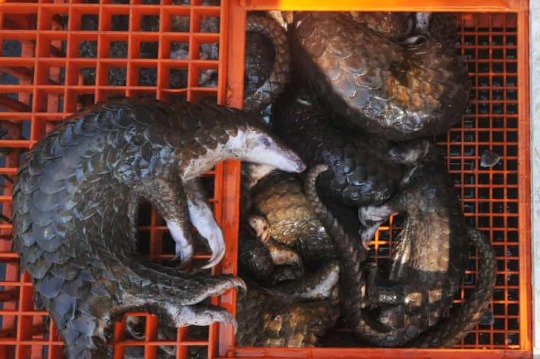
Equally, urban markets in west and central Africa sell monkeys, bats, rats, and dozens of species of bird, mammal, insect and rodent slaughtered and sold close to open refuse dumps and with no drainage.
“Wet markets make a perfect storm for cross-species transmission of pathogens,” says Gillespie. “Whenever you have novel interactions with a range of species in one place, whether that is in a natural environment like a forest or a wet market, you can have a spillover event.”
The Wuhan market, along with others that sell live animals, has been shut by the Chinese authorities, and last month Beijing outlawed the trading and eating of wild animals except for fish and seafood. But bans on live animals being sold in urban areas or informal markets are not the answer, say some scientists.
“The wet market in Lagos is notorious. It’s like a nuclear bomb waiting to happen. But it’s not fair to demonise places which do not have fridges. These traditional markets provide much of the food for Africa and Asia,” says Jones.
“These markets are essential sources of food for hundreds of millions of poor people, and getting rid of them is impossible,” says Delia Grace, a senior epidemiologist and veterinarian with the International Livestock Research Institute, which is based in Nairobi, Kenya. She argues that bans force traders underground, where they may pay less attention to hygiene.

Fevre and colleague Cecilia Tacoli, principal researcher in the human settlements research group at the International Institute of Environment and Development (IIED), argue in a blog post that rather than pointing the finger at wet markets, we should look at the burgeoning trade in wild animals.
“It is wild animals rather than farmed animals that are the natural hosts of many viruses,” they write. “Wet markets are considered part of the informal food trade that is often blamed for contributing to spreading disease. But … evidence shows the link between informal markets and disease is not always so clear cut.”
Changing behaviour
So what, if anything, can we do about all of this?
Jones says that change must come from both rich and poor societies. Demand for wood, minerals and resources from the global north leads to the degraded landscapes and ecological disruption that drives disease, she says. “We must think about global biosecurity, find the weak points and bolster the provision of health care in developing countries. Otherwise we can expect more of the same,” she adds.
“The risks are greater now. They were always present and have been there for generations. It is our interactions with that risk which must be changed,” says Brian Bird, a research virologist at the University of California, Davis School of Veterinary Medicine One Health Institute, where he leads Ebola-related surveillance activities in Sierra Leone and elsewhere.
“We are in an era now of chronic emergency,” Bird says. “Diseases are more likely to travel further and faster than before, which means we must be faster in our responses. It needs investments, change in human behaviour, and it means we must listen to people at community levels.”

Getting the message about pathogens and disease to hunters, loggers, market traders and consumers is key, Bird says. “These spillovers start with one or two people. The solutions start with education and awareness. We must make people aware things are different now. I have learned from working in Sierra Leone with Ebola-affected people that local communities have the hunger and desire to have information,” he says. “They want to know what to do. They want to learn.”
Fevre and Tacoli advocate rethinking urban infrastructure, particularly within low-income and informal settlements. “Short-term efforts are focused on containing the spread of infection,” they write. “The longer term – given that new infectious diseases will likely continue to spread rapidly into and within cities – calls for an overhaul of current approaches to urban planning and development.”
The bottom line, Bird says, is to be prepared. “We can’t predict where the next pandemic will come from, so we need mitigation plans to take into account the worst possible scenarios,” he says. “The only certain thing is that the next one will certainly come.”
This piece is jointly published with Ensia
#science#nature#animals#biodiversity#conservation#environment#wildlife#wet market#wildlife trafficking#wildlife trade#africa#infectious diseases#coronavirus#covid 19#disease#zoonotic#ebola#nipah virus#SARS#china#lyme disease#west nile virus#zika virus#asia#pangolin#endangered species#habitat destruction#poaching#bats#epidemiology
75 notes
·
View notes
